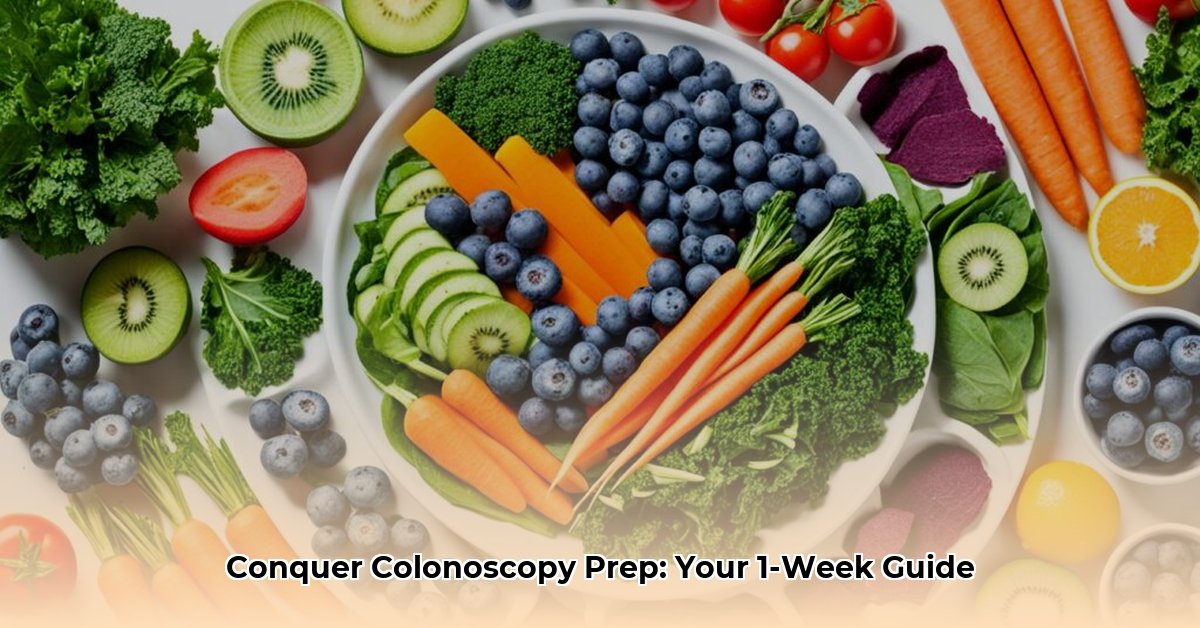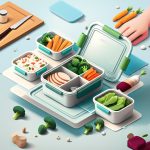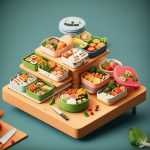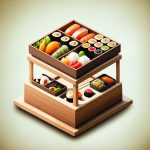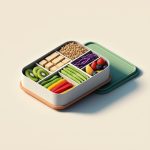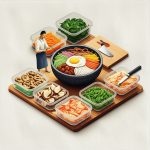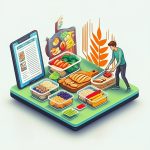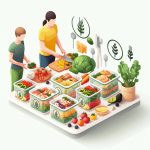Preparing for a colonoscopy might seem daunting, but with the right guidance, it can be a smooth process. This comprehensive guide provides a clear, step-by-step plan for your 1-week colonoscopy diet, empowering you to prepare confidently and ensuring the most accurate results.
Understanding the Importance of the Colonoscopy Diet
A clean colon is crucial for a successful colonoscopy. Any remaining residue can obstruct the doctor’s view, potentially masking polyps or other abnormalities. This specialized diet ensures your colon is clear, maximizing the effectiveness of the procedure. Think of it as a thorough cleansing, allowing for the best possible examination.
Your 7-Day Colonoscopy Preparation Plan
This plan outlines the dietary changes you’ll make in the week leading up to your colonoscopy. Remember, always follow your doctor’s specific instructions, as they may have tailored recommendations for you.
Days 1-4: Gradually Reducing Fiber
Fiber, while generally beneficial for digestion, can interfere with a clear colonoscopy view. During these initial days, focus on low-fiber foods that are easy to digest.
Foods to Enjoy:
- Refined Grains: White bread, white rice, plain pasta, crackers
- Proteins: Tender poultry, fish, eggs, tofu, smooth nut butters (no chunks)
- Fruits & Vegetables: Juice without pulp, applesauce, canned or peeled soft fruits (no skin or seeds), well-cooked and peeled vegetables (avoid corn, peas, and squash)
- Dairy: Milk, plain yogurt (no additions), cheese, cream
- Other: Clear broths, strained soups, plain puddings, ice cream, Jell-O (no red or purple), clear juices, soda, tea/coffee (no milk or creamer), butter, margarine, oils
Foods to Avoid:
- Whole Grains: Whole-wheat bread, brown rice, oats, whole-grain cereals
- Raw or Dried Fruits and Vegetables: Especially those with skin or seeds
- Legumes: Beans, lentils, peas
- Nuts and Seeds: Including popcorn and sesame seeds
- Dairy with additions: Yogurt with fruit, nuts, or seeds
Days 5-6: The Clear Liquid Phase
As your colonoscopy approaches, we transition to clear liquids. This further cleanses your colon, ensuring it’s as empty as possible.
Allowed Clear Liquids:
- Water: Stay well-hydrated – this is essential!
- Clear Broths: Chicken, beef, or vegetable (no solids)
- Plain Gelatin: (Avoid red or purple dyes)
- Pulp-Free Juices: Apple or white grape. Some experts suggest avoiding red-colored juices, as they can be confused with blood during the exam.
- Clear Sports Drinks: To replenish electrolytes. Some doctors may recommend avoiding these if your kidneys don’t process electrolytes well. Other doctors say that sports drinks do a better job of clearing out the bowel than other clear liquids.
- Popsicles (no red or purple): A cool and refreshing treat.
Day 7: Colonoscopy Day – The Final Preparations
Typically, you’ll continue with clear liquids until your procedure. Carefully follow your doctor’s instructions regarding any medications you take. Some may need to be adjusted or temporarily stopped.
Managing Potential Side Effects
The bowel preparation solution can cause temporary side effects like cramping, bloating, nausea, or gas. Here are some tips to manage these:
- Stay Hydrated: Sipping clear liquids slowly can help minimize discomfort and dehydration.
- Deep Breathing: Practice deep, slow breaths to alleviate cramping.
- Distraction: Engage in relaxing activities like reading, watching movies, or listening to music.
- Contact Your Doctor: If you experience severe or unusual symptoms, don’t hesitate to reach out to your medical team.
Sample Meal Ideas (Consult your doctor for personalized advice)
| Day(s) | Breakfast | Lunch | Dinner |
|---|---|---|---|
| 7-4 (Low-Fiber) | Scrambled eggs, white toast | Chicken breast, white rice | Baked cod, boiled potatoes |
| 5-6 (Clear Liquid) | Clear chicken broth | Apple juice | White grape juice |
| Day of Procedure | Nothing (NPO) | Nothing (NPO) | Nothing (NPO) |
Important Considerations
- Individual Needs: This guide provides general information, but individual needs can vary. Always consult with your physician for personalized instructions tailored to your medical history.
- Ongoing Research: Medical recommendations can evolve with ongoing research. Discuss any concerns with your doctor to ensure you’re following the most up-to-date advice.
- Open Communication: Maintain open communication with your healthcare provider. They are your partner in this process and can address any questions or concerns you may have.
By following this comprehensive guide and your doctor’s instructions, you can approach your colonoscopy with confidence, knowing you’ve taken the necessary steps for a successful and informative procedure.
- Plastic Bento Boxes Make Meal Prep and Cleanup Effortless - December 8, 2025
- Shop Bento Lunch Boxes on Sale Nearby Now - December 7, 2025
- Shop Bento Box for Sale To Find Your Ideal Lunch Container - December 6, 2025
